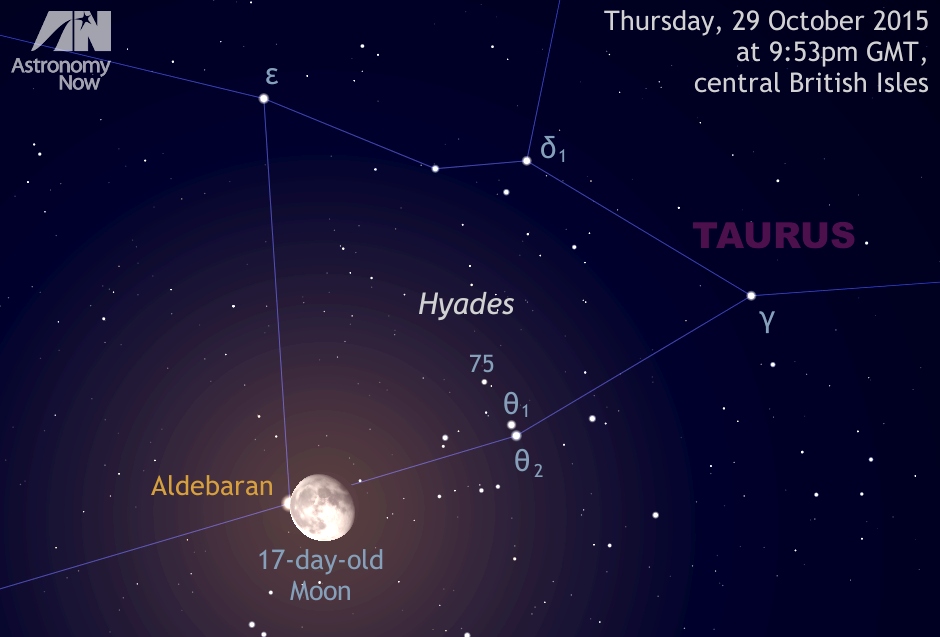
The exact times of the disappearance and reappearance of this first-magnitude star depend on where you live. For observers close to the heart of the UK, the advancing bright lunar limb (left-hand side of the Moon as seen with the naked eye and binoculars) passes over Aldebaran near 9:53pm and the star reappears at the Moon’s darkened hemisphere, just above the oval-shaped lunar sea known as the Mare Crisium, close to 10:46pm. For observers near London, Aldebaran disappears close to 9:48pm and reappears near 10:46pm. If you are observing in the vicinity of Edinburgh, the star winks out near 9:57pm and pops back into view about 10:48pm.
As with any occultation observation, it pays to be setup at least 15 minutes before the predicted times of disappearance and reappearance so that you don’t miss out — plus it’s fun to see the advancing Moon glide ever closer to the star before it finally disappears from view. However, the reappearance of Aldebaran will be the most spectacular aspect of this particular event since it occurs at the Moon’s darkened hemisphere with a heightened sense of anticipation as you are unsure exactly when it will happen!
Inside the magazine
You can find out more about this month’s lunar phenomena and planetary peregrinations in the October edition of Astronomy Now in addition to a full guide to the night sky.
Never miss an issue by subscribing to the UK’s biggest astronomy magazine. Also available for iPad/iPhone and Android devices.




